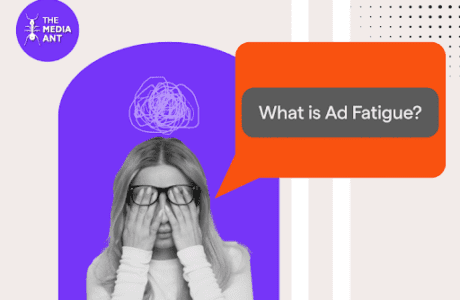Media buying involves purchasing advertising space across various platforms to reach a specific target audience. By leveraging data insights, integrating multiple channels, and employing advanced techniques such as programmatic advertising and retargeting, businesses can optimize their ad spend and enhance engagement. Additionally, strategic influencer collaborations and seasonal promotions can drive brand visibility and conversions. Continuous performance analytics and optimization ensure that campaigns remain effective and responsive to changing market conditions.
To help you maximize your advertising impact, we’ve compiled seven proven media buying strategies. Implementing these strategies will ensure your ads are placed in the right medium, at the right time, and in the right location, maximizing their impact and driving better results.
1.Data-Driven Targeting
Objective: To reach the most relevant audience with precision, minimizing waste and maximizing ROI.
Approach: Data-driven targeting leverages consumer data to identify and segment audiences based on their behaviors, preferences, demographics, and other key factors. This strategy involves collecting and analyzing data from various sources, such as website analytics, social media insights, and customer databases. By using this information, marketers can create highly personalized and relevant ads that resonate with their target audience.
Result: Implementing data-driven targeting increases the relevance of your ads, leading to higher engagement rates, improved conversion rates, and better overall campaign performance. This approach ensures that your advertising budget is spent efficiently, reaching those most likely to be interested in your products or services.
2. Multi-Channel Integration
Objective: To create a cohesive and comprehensive advertising strategy that reaches audiences across multiple touchpoints.
Approach: Multi-channel integration involves utilizing various media channels, such as TV, radio, print, digital, and social media, in a unified manner. This strategy ensures that your message is consistently delivered across different platforms, providing multiple opportunities for your audience to engage with your brand. By coordinating your efforts across channels, you can reinforce your messaging and create a seamless user experience.
Result: A well-executed multi-channel integration strategy leads to increased brand awareness, improved customer engagement, and a higher likelihood of conversion. It allows you to reach a broader audience and ensures that your message is seen multiple times, enhancing recall and recognition.
3. Programmatic Advertising
Objective: To automate the buying and placement of ads to improve efficiency and targeting precision.
Approach: Programmatic advertising uses automated technology to buy and sell ad inventory in real-time through an auction-based system. This strategy leverages algorithms and machine learning to optimize ad placements based on data insights. By using programmatic advertising, marketers can deliver highly targeted ads to the right audience at the right time, ensuring maximum impact.
Result: Programmatic advertising streamlines the ad buying process, reduces manual intervention, and improves targeting accuracy. This results in higher ad performance, better ROI, and more efficient use of advertising budgets. Additionally, it allows for real-time optimization, enabling quick adjustments to enhance campaign effectiveness.
4. Influencer Collaborations
Objective: To leverage the reach and credibility of influencers to promote your brand and engage with their followers.
Approach: Influencer collaborations involve partnering with individuals who have a significant following on social media or other platforms. These influencers can help amplify your message, create authentic content, and drive engagement with their audience. By selecting influencers whose values and audience align with your brand, you can effectively reach potential customers in a more organic and trusted manner.
Result: Influencer collaborations can significantly boost brand visibility, drive traffic, and increase conversions. The authenticity and credibility of influencers enhance trust in your brand, leading to higher engagement and stronger relationships with your audience. This strategy also allows for creative and diverse content that resonates with different segments of your target market.
5. Retargeting Campaigns
Objective: To re-engage users who have previously interacted with your brand but have not yet converted.
Approach: Retargeting campaigns focus on reaching users who have visited your website, engaged with your ads, or shown interest in your products but haven’t completed a desired action. This strategy uses cookies to track user behavior and serve targeted ads to remind them of your brand and encourage them to return and convert. Retargeting can be implemented across various platforms, including social media, display networks, and email.
Result: Retargeting campaigns are highly effective in recapturing the interest of potential customers and driving conversions. By staying top-of-mind and providing gentle reminders, you can encourage users to complete their purchase or take other desired actions. This strategy often results in higher conversion rates and a better return on ad spend (ROAS).
6. Seasonal Promotions
Objective: To capitalize on peak shopping periods and special occasions to boost sales and engagement.
Approach: Seasonal promotions involve aligning your advertising efforts with key holidays, events, and seasonal trends. This strategy includes creating tailored campaigns that resonate with the themes and sentiments of the season, offering special deals, discounts, and limited-time offers. By planning ahead and understanding the seasonal behaviors of your audience, you can create timely and relevant ads that drive urgency and excitement.
Result: Seasonal promotions can lead to significant spikes in sales and engagement during peak periods. By leveraging the increased consumer activity and aligning your campaigns with seasonal trends, you can capture the attention of your audience and encourage them to make purchases. This strategy also helps in clearing inventory and attracting new customers.
7. Performance Analytics and Optimization
Objective: To continuously monitor, analyze, and optimize campaign performance for better results.
Approach: Performance analytics and optimization involve tracking key performance indicators (KPIs) and using data insights to make informed decisions. This strategy includes setting up robust tracking mechanisms, analyzing campaign data, identifying areas for improvement, and implementing changes to enhance performance. Regularly reviewing and optimizing your campaigns ensures that you are maximizing your ROI and achieving your marketing goals.
Result: By continuously optimizing your campaigns based on performance data, you can improve their effectiveness and efficiency. This leads to better targeting, higher engagement rates, and increased conversions. Performance analytics also provide valuable insights into customer behavior, helping you refine your overall media buying strategy and make data-driven decisions.
The Media Ant is an advertising agency specializing in planning and buying optimal media space. Leveraging its expertise, it assists businesses in reaching their target audiences effectively through strategic placement across various traditional and digital channels.
Conclusion
Implementing effective media buying strategies is crucial for the success of your advertising campaigns. By leveraging data-driven targeting, multi-channel integration, programmatic advertising, influencer collaborations, retargeting campaigns, seasonal promotions, and performance analytics and optimization, you can maximize your reach, engagement, and conversions. Each strategy offers unique benefits and, when combined, can create a powerful and comprehensive media buying approach that drives significant results for your brand.
FAQs
1) What are media buying strategies? Media buying strategies are techniques and approaches used to purchase advertising space across various media channels effectively. These strategies aim to reach the target audience, maximize engagement, and achieve the best possible return on investment.
2) What is an example of media buying? An example of media buying is purchasing ad space on a popular social media platform to target a specific demographic. For instance, a fashion brand might buy Instagram ads to reach young adults interested in fashion and lifestyle content.
3) What is an example of media buying? Media buying can involve purchasing TV commercial slots during prime time to reach a broad audience. For example, a car manufacturer might buy ad space during a major sports event to promote a new vehicle model to millions of viewers.
4) What are the sources of media buying? Sources of media buying include various platforms and channels such as television, radio, print media, digital and social media, outdoor advertising, and programmatic ad exchanges. These sources offer different opportunities to reach and engage with the target audience through paid advertisements.





